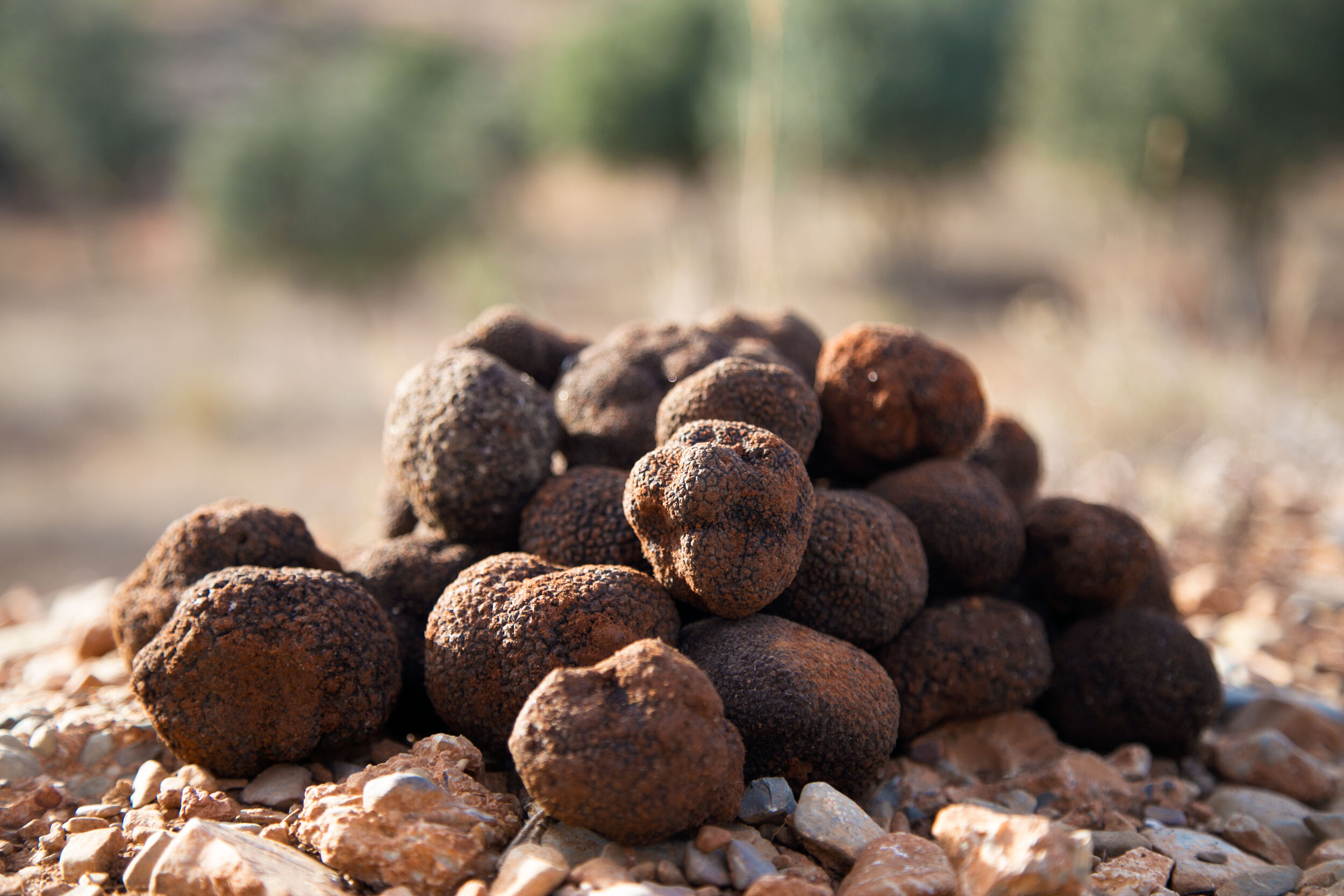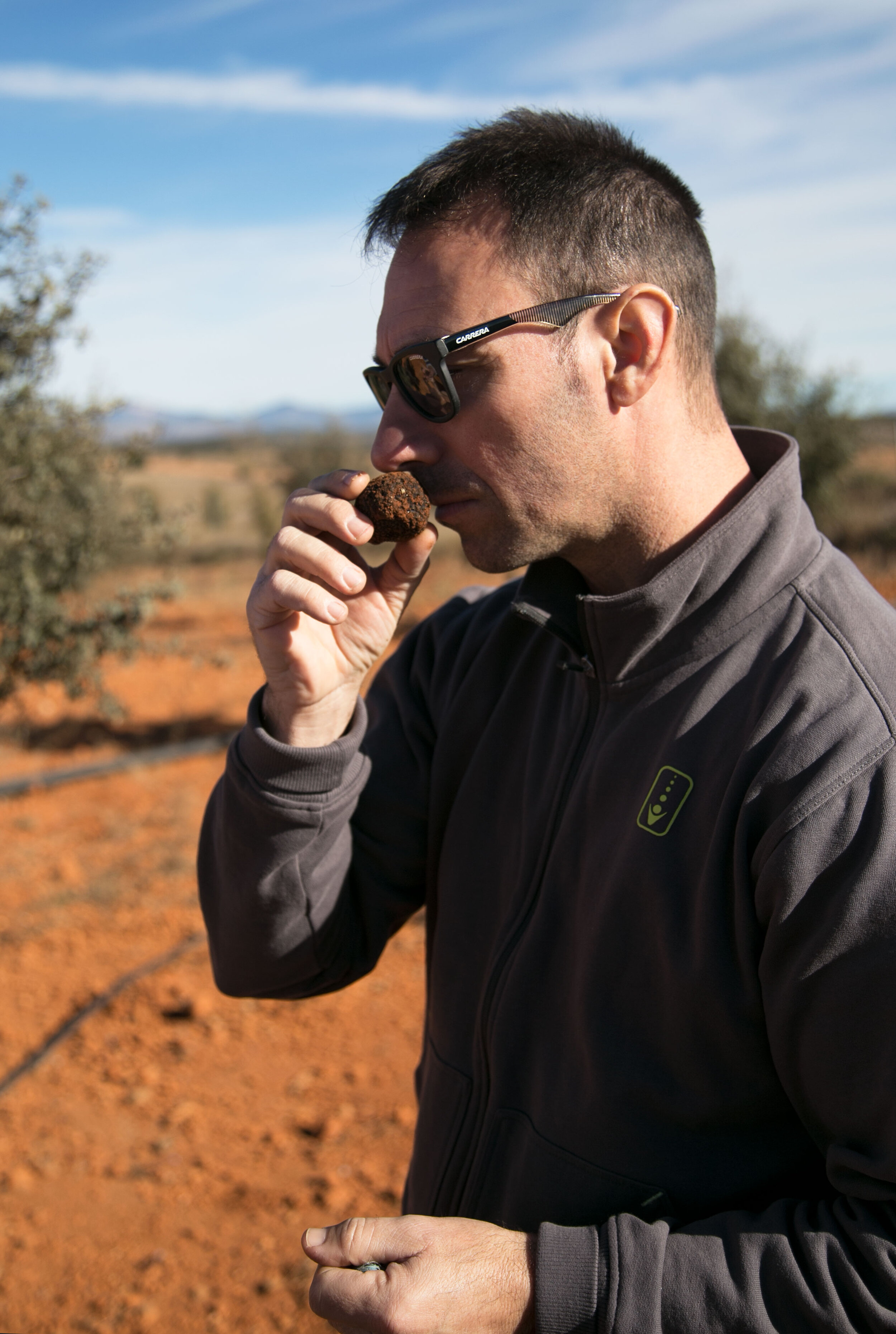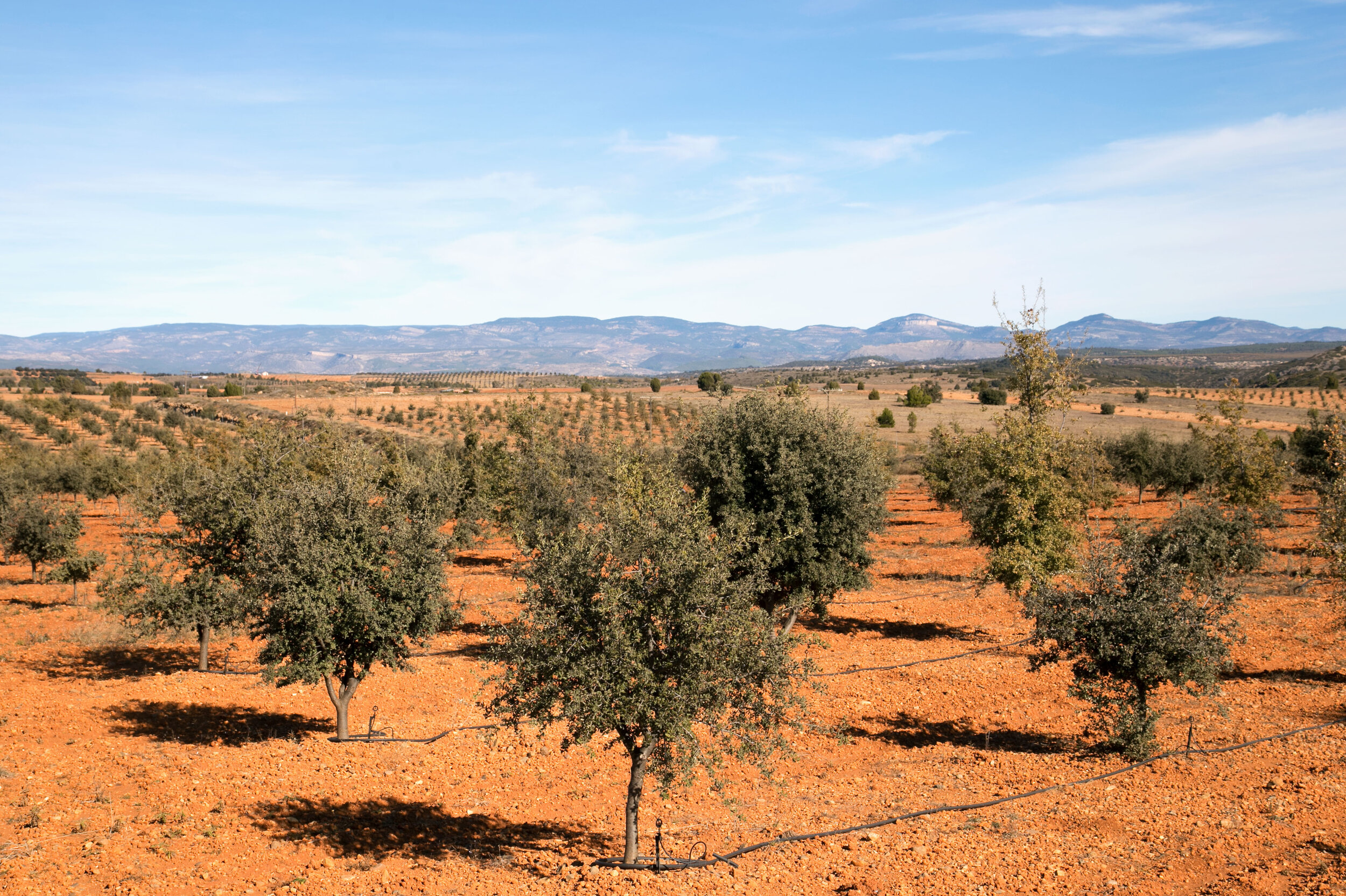
In the hills above Valencia lies Teruel, one of the three Provinces of Aragón. The dwindling population held little hope for a future on their unusually cold, arid land until a few keen nosed French tourists stumbled upon some “Black Diamonds” in the 1960’s...
Truffles have been used for thousands of years with various references to them throughout the ages, dating back as far as the Ancient Egyptians. They gained early popularity with the Greeks and Romans who began to cook and identify some of the species we eat today, before falling out of favour in The Middle Ages.
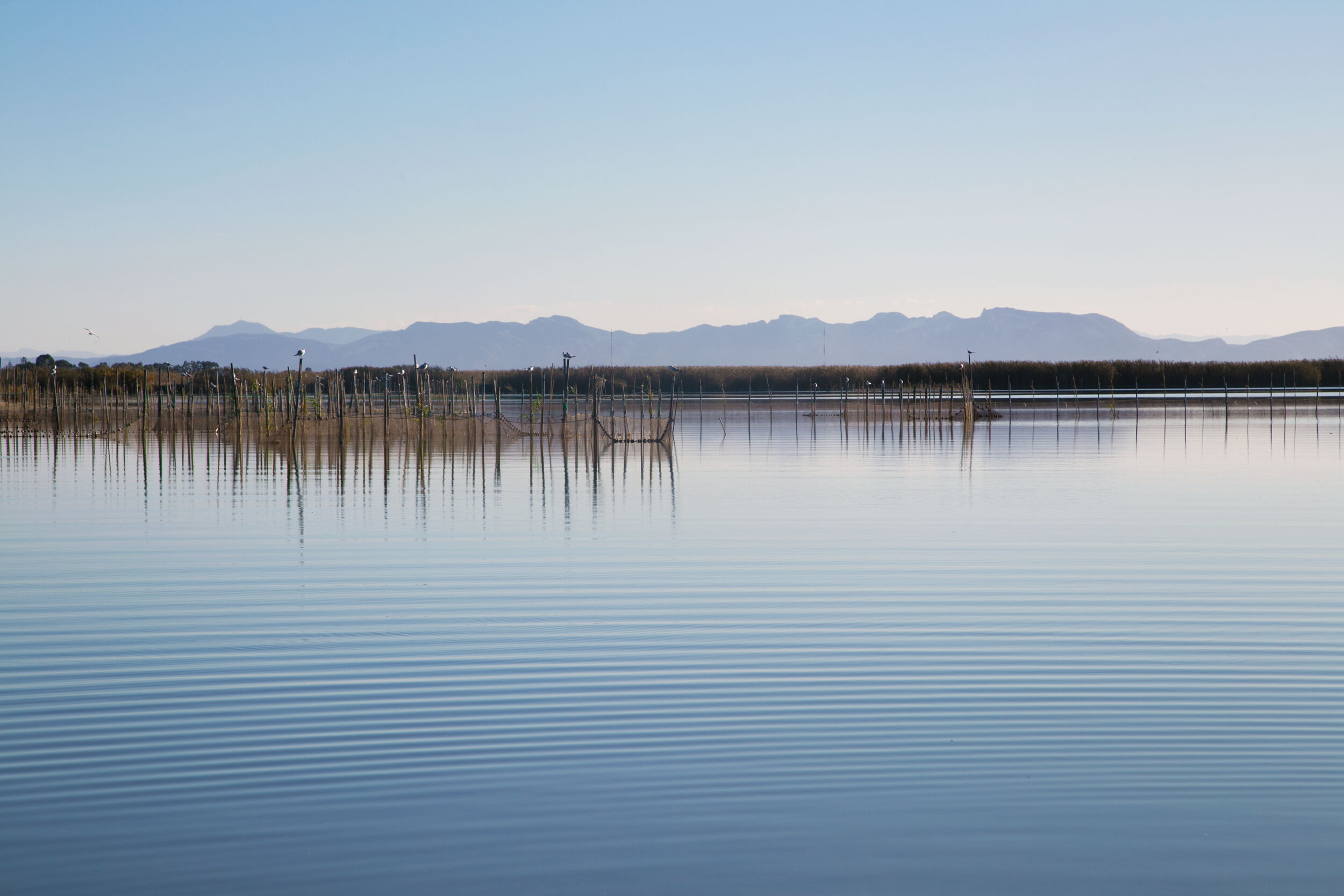
Interest was revived during the Renaissance and by the 18th century, Italy had successfully put White Truffles on the culinary map. The same can be said for the French with Black Winter (Périgord) Truffles.
In the late 1700’s, France began to experiment with farming truffles. They worked out that if you collected acorns from truffle bearing trees (predominantly Oak) and planted them in similar soil with a high chalk content, the trees that grew from the seeds could (not always by any stretch) produce truffles.
Thousands of trees were planted and France's truffle output skyrocketed. By the late 1800’s France was producing hundreds, if not thousands of tonnes of truffles.
Sadly that truffle boom didn’t last long before the country was ravaged by a crop crippling pest (Phylloxera), a Rural Exodus and two World Wars. France’s truffle production was now back to square one.
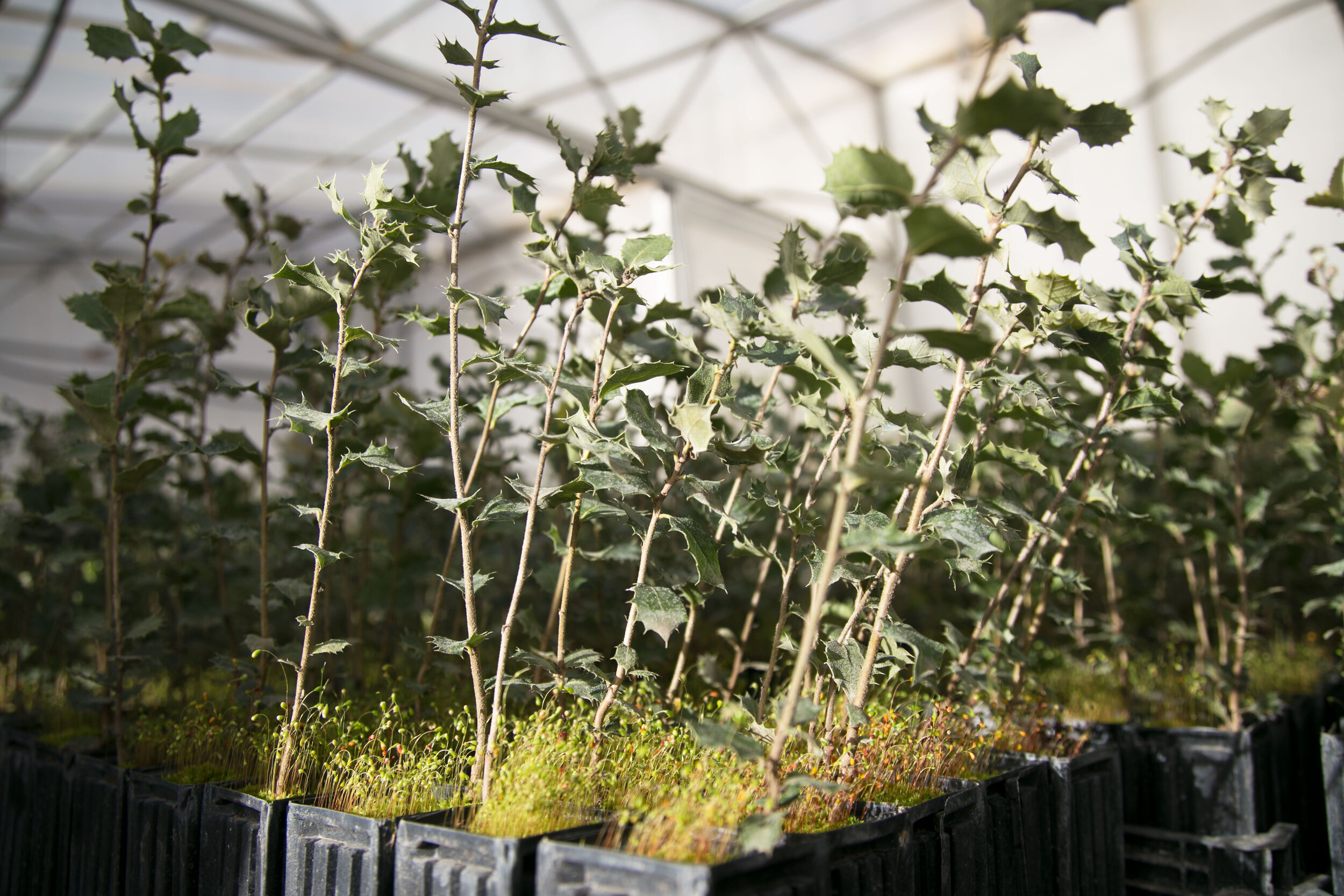
Then came the invention of inoculation.
In the 1960’s French scientists worked out how to inoculate seeds from compatible trees. This discovery made the odds of success far greater and injected life back into truffle production.
However by this point in time, France’s climate, landscape and approach to agriculture had shifted making it more arduous to grow Black Winter Truffles. It was around this time that they discovered Black Diamonds in Spain.
ROQUE SANCHEZ
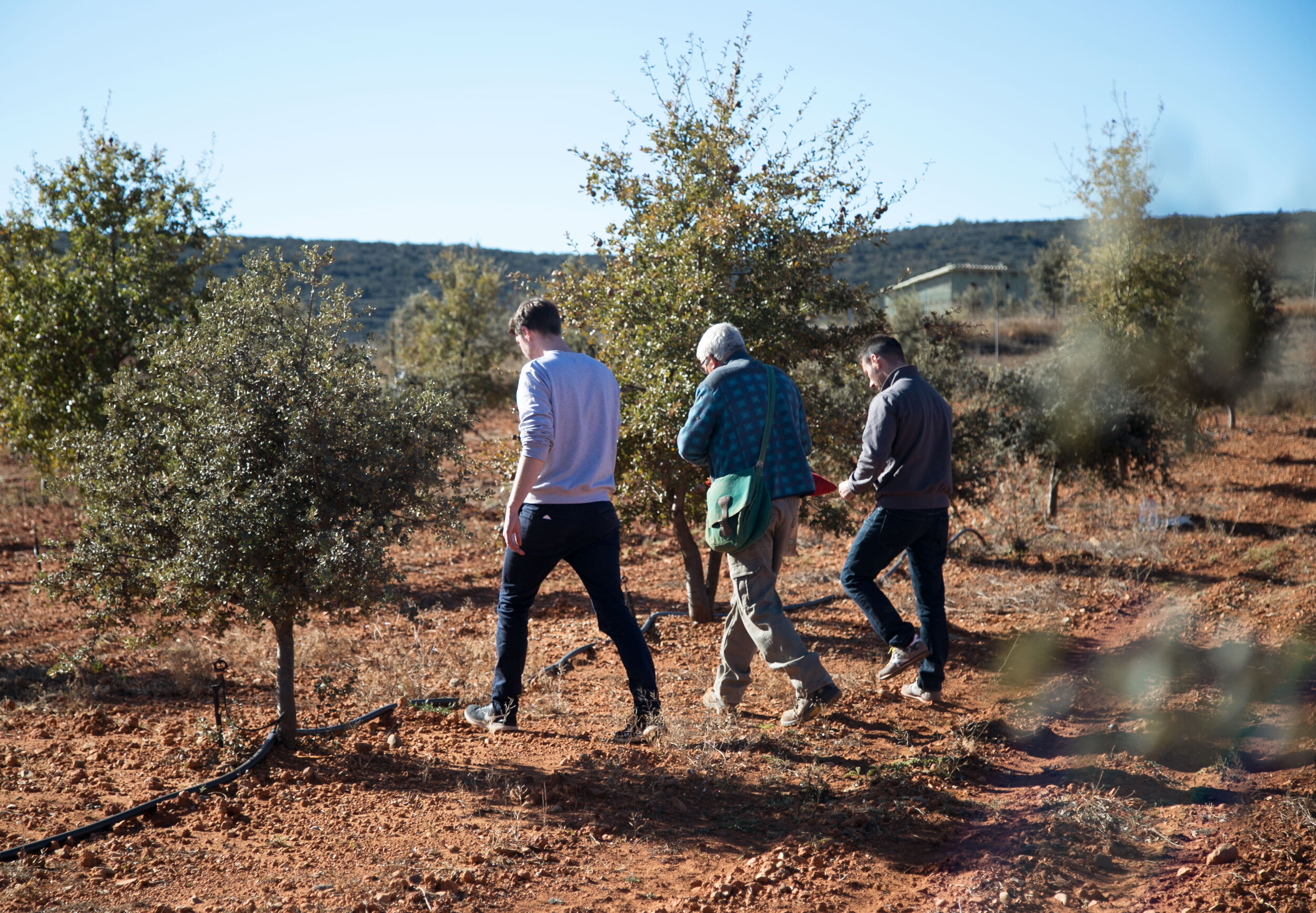
In the 1960’s, truffles were completely unknown in Spain. The locals had no idea why these French tourists were scouring their hills during the winter months. It took a few years but the locals eventually cottoned on and began hunting themselves. Roque’s grandfather was one of these early hunters.
After a couple of years of politely observing the truffle hunters, Roque's grandfather decided to approach them. Although they did not share a language, he managed to exchange enough information to set him on the right track.
Over the next few seasons, he patiently trained his hunting dog to hunt for truffles whilst honing his own skills - learning which trees, what kind of soil and the telltale signs on the ground. More and more locals took up truffle hunting, realising that it could be the lifeline their community so desperately needed.
As Spain’s climate began to change, truffles became harder to find. By this time France was successfully inoculating truffle trees and it was time for Spain to follow suit.
Spain began cultivating truffles in the 80's using France's inoculation techniques. The results exceeded all expectations. The conditions were perfect, yielding beautiful aromatic truffles fit for French Royalty.

Realising the potential, Spain began to invest in truffle farms.
Research into Melanosporum and their cultivation was carried out, determining which trees, soil content and altitude was best for these truffles and millions of euros were invested towards irrigation for the truffle plantations.
The research and investment rejuvenated the community providing hope for future generations.
Spain is now the largest producer of Black Winter Truffles in the world, exporting an estimated 70% of all Black Winter Truffles consumed in the fine dining industry during the winter months.
There's still no guarantee that an inoculated tree will produce truffles. It takes 10 years for a tree to show any signs of fruiting, so the mystery remains, and the results are all the more rewarding.
Roque is the third generation in his family to work with truffles in Teruel. He's spent his entire life handling them and we hope that he continues to do so for many years to come and inspires future generations to do the same along the way.
